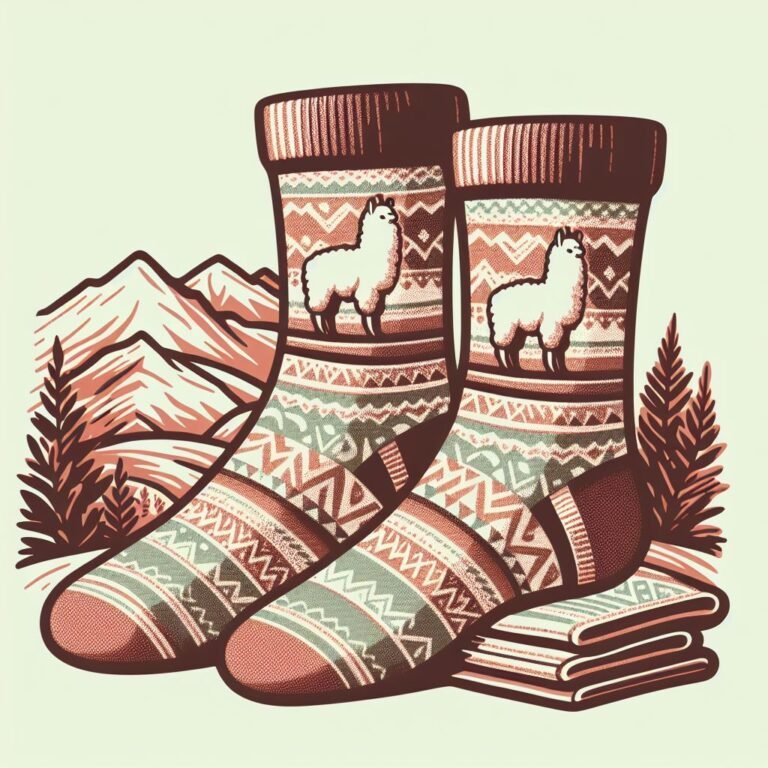Llama vs Alpaca: Understanding the Key Differences
Llamas and alpacas, both native to the Andean highlands of South America, are often confused due to their similar appearance. However, they exhibit distinct differences that are important for enthusiasts, farmers, and the curious observer. These differences span physical characteristics, behaviors, and roles in human agriculture and culture.

The physical contrast between llamas and alpacas is immediately noticeable in size and facial structure. Llamas are significantly larger, often being twice the weight of alpacas, and have longer faces that give them a regal appearance. Alpacas are endearingly smaller, with shorter, more pointed ears and a blunt face, often characterized by a “smooshed-in” look. The reasons for these differences are rooted in their distinct domestication history and uses: llamas as pack animals, and alpacas for their luxurious fleece.
Key Takeaways
Physical Characteristics
In discussing llamas and alpacas, distinct physical features set them apart, including size, fur characteristics, and facial structures.

Size Comparison
Llamas typically stand about 120 cm (47 inches) at the shoulder and weigh approximately 113 kg (250 pounds). Alpacas, on the other hand, are considerably smaller, measuring roughly 90 cm (35 inches) high at the shoulder and weight between 55 and 65 kg (121 to 143 pounds).
Fur Texture and Color
Alpaca fur is known for its softness and variety of colors, including black, brown, white, and tan. Llamas have coarser outer coats over a softer undercoat, which can also come in various colors and shades.
Facial Features
The facial characteristics of llamas and alpacas differ significantly. Alpacas have smaller, blunter faces with short, spear-shaped ears. In contrast, llamas possess elongated faces with banana-shaped ears.
Behavioral Traits

Understanding the distinctive behavioral traits of llamas and alpacas can shed light on their adaptability and functionality in various environments.
Social Behavior
Llamas are known for their pack animal role, historically being used to carry gear over long distances. They typically exhibit a protective nature, especially as guard llamas, where they help safeguard other livestock on a farm. In contrast, alpacas are primarily raised for their fiber and are generally more sociable amongst their own kind, often found in herds.
Reproduction
Alpacas tend to have a more structured breeding system with a dedicated breeding season, which is usually in the fall. They often give birth to a single offspring after a gestation period of around 11 to 12 months. On the other hand, llamas are less seasonal in breeding and may breed throughout the year, although they also have similar gestation periods and usually produce one cria.
Communication Styles
Both alpacas and llamas communicate through a series of vocalizations, with the most common being a soft hum. Llamas in particular may also use a series of ear, tail, and body postures to express emotions and intentions. They can become more vocal when agitated or to assert dominance within a group. Alpacas also display unique sounds, such as clucking to indicate a friendly approach or an alarm call when they perceive danger.
Habitat and Distribution
Llamas and alpacas are both native South American camelids that thrive in high-altitude environments, such as the Andean mountain range. Their respective habitats and distributions, while overlapping, have distinct characteristics adapted to their unique needs and roles in the ecosystem.
Natural Habitats
Llamas are well-adapted to harsh, mountainous regions, capable of traversing steep terrain with ease. They typically inhabit areas ranging from 2,500 to 4,000 meters above sea level, where they graze on a variety of grasses and plants. Their thick wool and large body mass make them ideal for colder climates found at these elevations.
Alpacas, although also found in the high Andes, prefer more sheltered and less rugged terrain than llamas. They are usually found at elevations between 3,500 and 5,000 meters. Alpacas have a finer fleece, which provides excellent insulation against the cold, and they are primarily bred for this high-quality wool.
Geographical Range
Llamas have been extensively domesticated and are now found throughout South America. Their geographical range extends from the central Andes in Peru to the altiplano plateaus of Bolivia and parts of Argentina. Domestic llamas are even found in North America and Europe due to international trade and breeding programs.
Alpacas, with a more limited distribution, are predominantly present in the central Andes of Peru, western Bolivia, Ecuador, and northern Chile. Their adaptability to high mountainous environments makes them less common in lower altitudes and other continents. However, similar to llamas, alpacas are also present globally due to their valuable fiber and increasing popularity among breeders.
Domestication and Use
The domestication of llamas and alpacas has deep historical roots with distinctive roles carved out in agriculture that continue to this day. They are particularly prized for their wool, which is used in textile production.
History of Domestication
Llamas and alpacas were first domesticated in the high Andean regions of South America over 5,000 years ago. The alpaca is descended from the wild vicuña and the llama from the guanaco. These animals have adapted to extreme conditions and have been integral to the survival of indigenous cultures in these regions.
Roles in Agriculture
Traditionally, llamas were utilized as pack animals, capable of carrying significant loads over the mountainous terrain. In contrast, alpacas have been more central to wool production, while still serving purposes similar to that of llamas, including the provision of meat and hides. Both species’ dung is used as an effective fertilizer, showcasing their versatility.
Wool and Textile Production
The fiber of llamas and alpacas is highly valued. Alpaca fiber, known for its fine quality, is softer and more luxurious and often commands a higher price. Comparatively, llama wool is coarser and highly suitable for carpets and rope-making. Wool production plays a critical economic role in Andean communities, contributing to the global textile market.
Dietary Habits

Understanding the dietary habits of llamas and alpacas is essential to ensure their health and well-being, as both species have evolved to survive on specific types of feed and nutrient intakes.
Feeding Preferences
Llamas and alpacas exhibit different feeding preferences. Llamas are adaptive feeders that often consume a variety of plants, including shrubs and rough forage, that many other grazing animals may avoid. In contrast, alpacas typically prefer softer, more tender grasses and forbs. However, both animals are able to thrive well on good-quality hay and can derive nutrition from pasture grasses.
Nutrition and Digestion
Nutrition and digestion for llamas and alpacas are similar due to their shared heritage as camelids. Both have a highly efficient three-chambered stomach that allows them to extract maximal nutrients from their feed.
- Salt Supplementation: Essential for maintaining a balanced diet, specific salt products and feeding recommendations can help keep llamas and alpacas in prime health.
- Digestive Efficiency: Their digestive systems enable them to cope with high-fiber, low-quality feedstocks better than other herbivores, making them particularly well-suited for environments with coarse vegetation.
By adhering to these feeding recommendations and understanding their nutritional needs, owners can ensure the long-term health of their llamas and alpacas.
Health and Care

Proper health management and daily care are pivotal for the well-being of llamas and alpacas. Each animal requires specific attention to combat common diseases, regular veterinary check-ups, and daily care routines that are critical for their longevity and quality of life.
Common Diseases
Both llamas and alpacas are susceptible to a range of common diseases. Some of the illnesses they might encounter include:
- Parasitic Infections: Internal parasites like worms can cause weight loss and anemia. External parasites such as mites may lead to skin issues.
- Dental Problems: Misalignment of teeth, known as malocclusion, can affect their feeding and lead to malnutrition.
- Heat Stress: Both species can suffer from heat stress, particularly if they have heavy fleece and inadequate shade or water.
Veterinary Needs
Regular veterinary check-ups are crucial to monitor and maintain the health of llamas and alpacas. Essential veterinary needs include:
- Vaccinations: Protect against diseases such as rabies, tetanus, and clostridial infections.
- Fecal exams: Conducted to check for the presence of parasitic worms and appropriate deworming when necessary.
Daily Care Requirements
The daily care requirements of llamas and alpacas involve several aspects, including:
- Diet: Provide a balanced diet consisting of quality grass hay, fresh water, and mineral supplements tailored to their needs.
- Shelter: Adequate shelter to protect from extreme weather and predators.
- Fleece Management: Regular shearing is required to prevent overheating and matting of their fleece.
Conservation Status

Llamas and alpacas, both residents of the South American Andes, now have differing concerns regarding their conservation.
Llamas (Lama glama), with their robust size and adaptability, are currently not classified as endangered. They are utilized for their meat, fiber, and as pack animals, and their population has remained stable due to their widespread domestic use across South America.
| Conservation Status | Population Trend |
|---|---|
| Llama | Stable |
| Alpaca | Mostly Stable |
In contrast, alpacas (Vicugna pacos) have a more nuanced situation. While they are not listed as endangered and the domestic population is bred actively for their luxurious fiber, the preservation of their genetic diversity is of some concern. Breeders tend to favor certain desirable traits, which can lead to a narrowing of the genetic pool. Conservation efforts must balance the economic drive of alpaca farming with measures to maintain genetic diversity.
The International Union for Conservation of Nature (IUCN) has not assessed the wild relatives of llamas and alpacas, the guanaco and vicuña, in the same capacity as their domestic counterparts. However, the wild populations face threats from hunting and habitat loss. Initiatives to protect these species in the wild also indirectly benefit their domestic relatives’ genetic diversity.
Efforts to monitor populations and implement conservation measures continue to be important, particularly in ensuring the long-term sustainability of these culturally and economically significant animals.
Frequently Asked Questions

In this section, you will find answers to common questions about the differences and similarities between llamas and alpacas, ranging from their wool quality to their historical uses.








5 Comments
Our picks
Alpaca & Wool Felted Sole Inserts: Comfy Upgrade?
Best Alpaca Socks for Hiking: Ultimate Comfort and Durability on Trails
Best Alpaca Halter for Comfort and Control